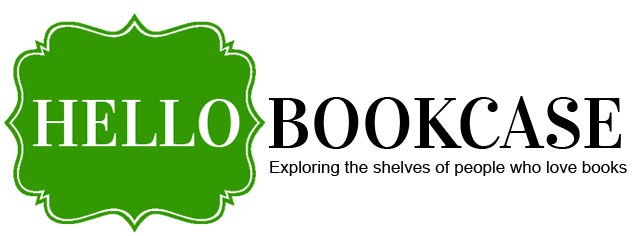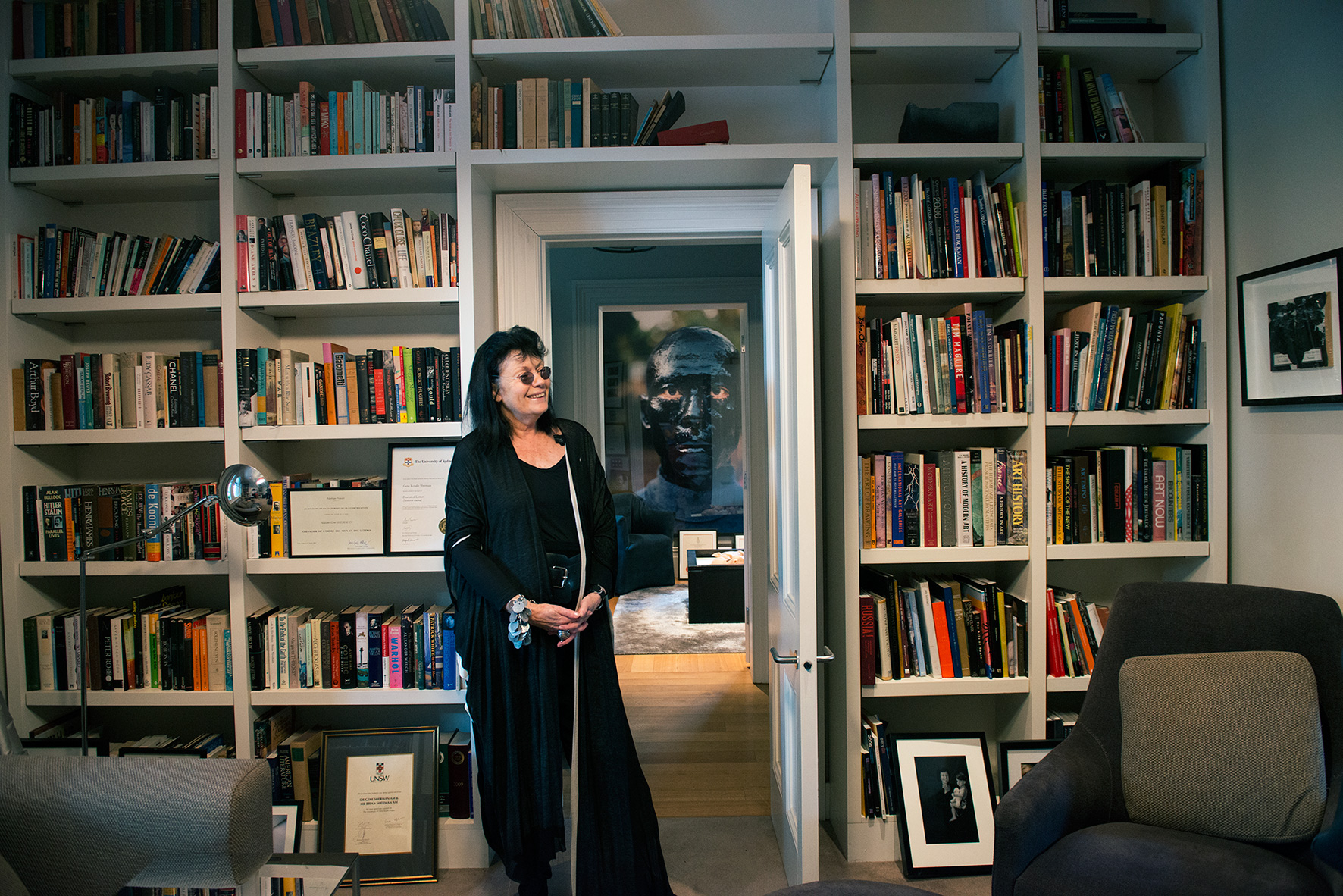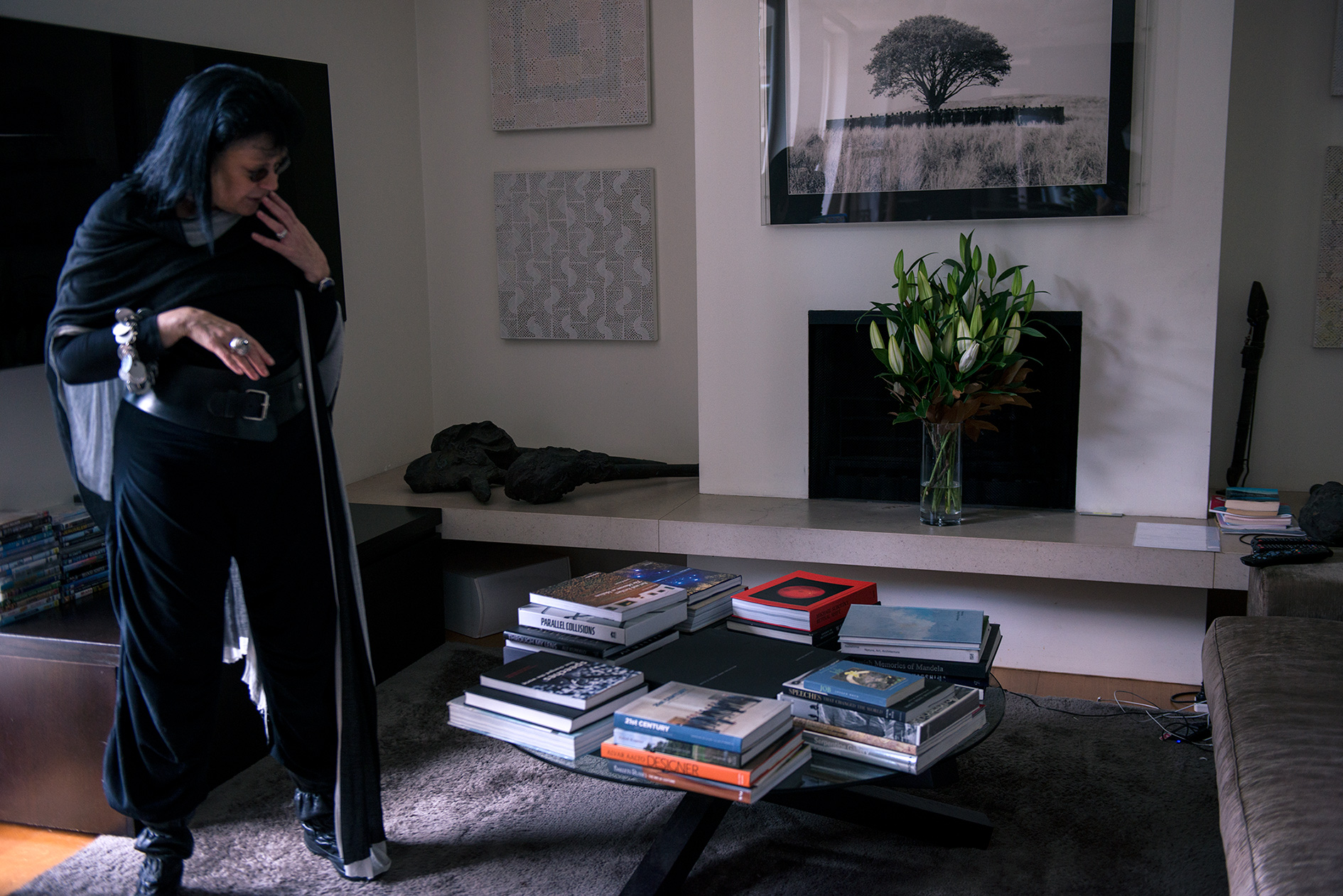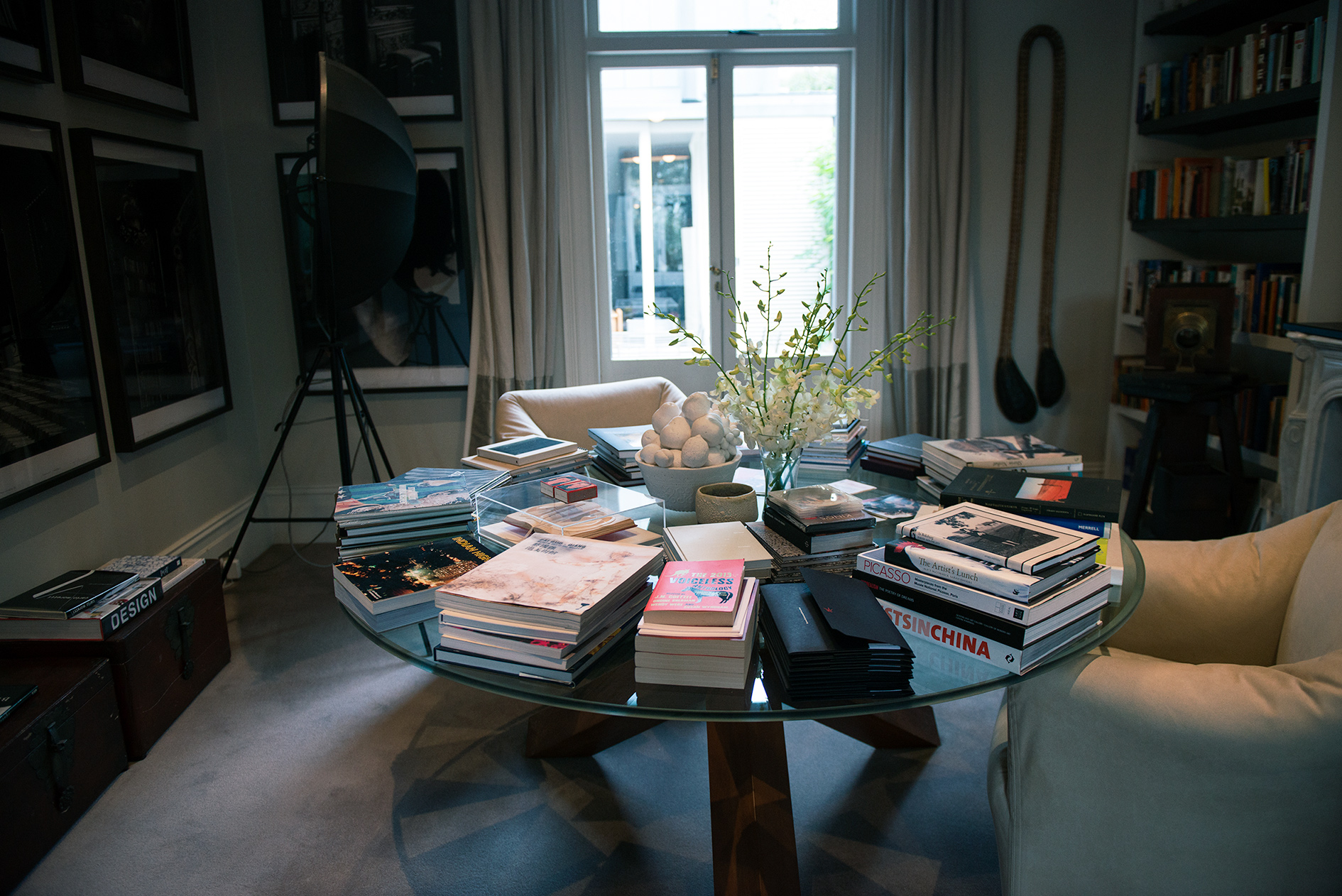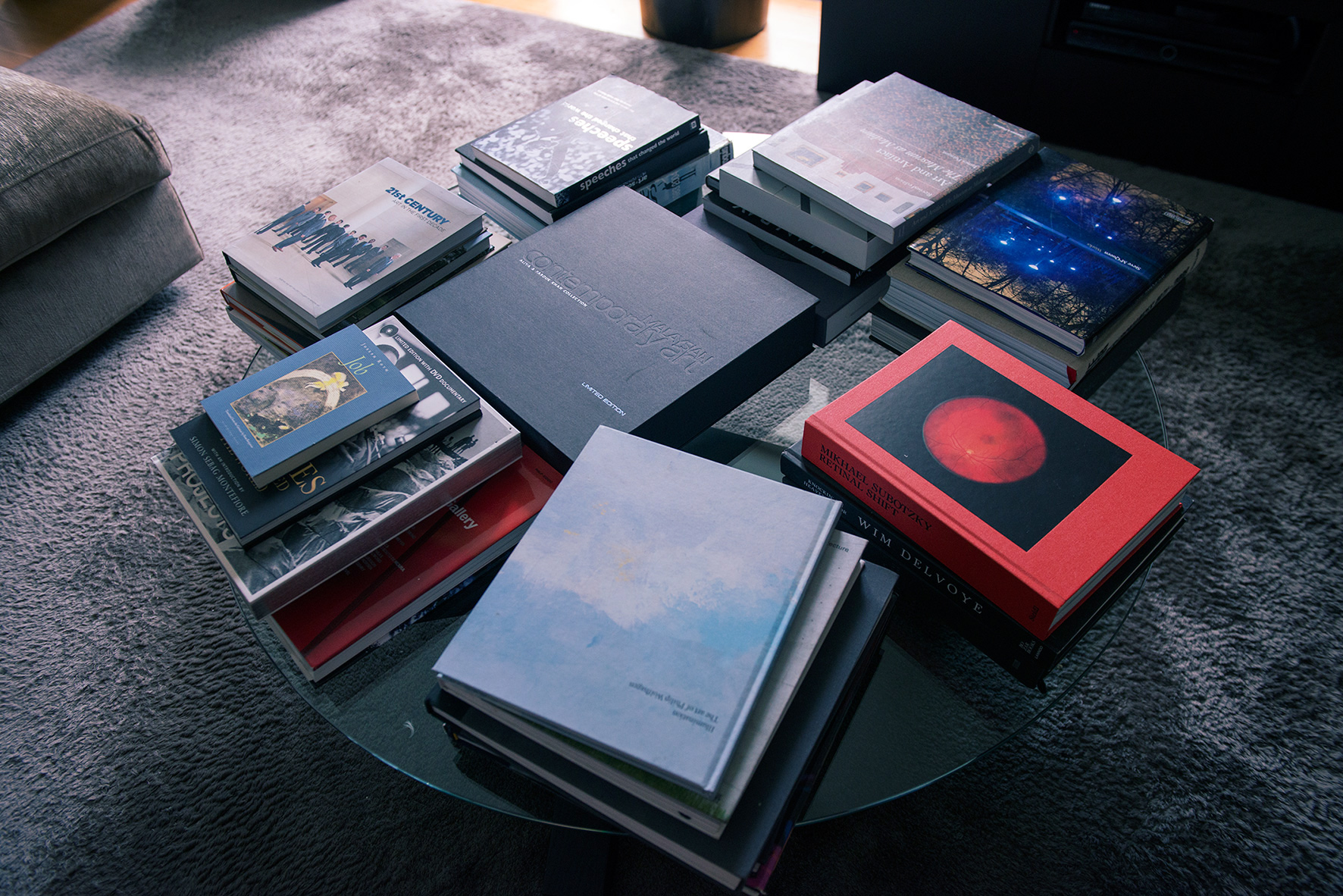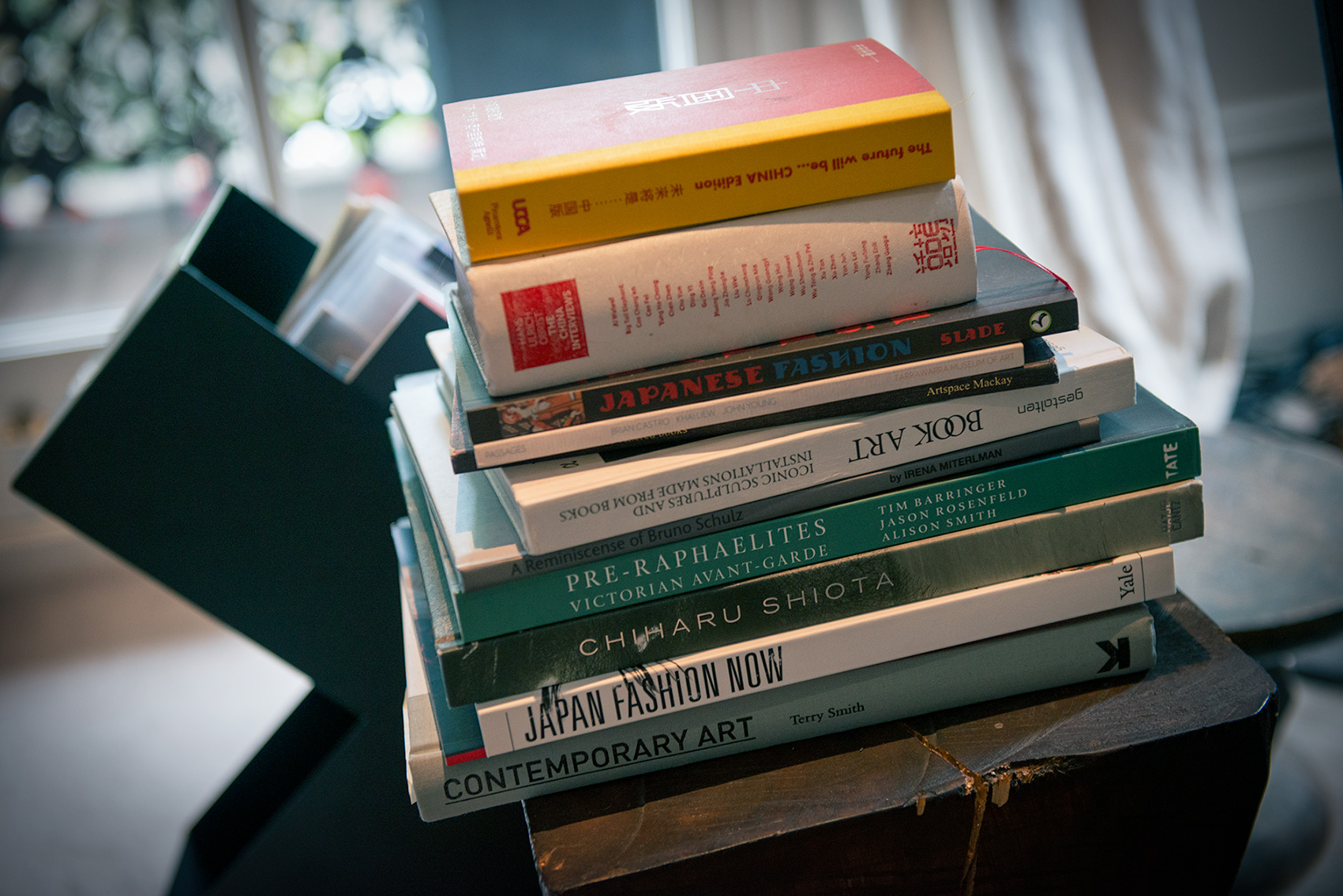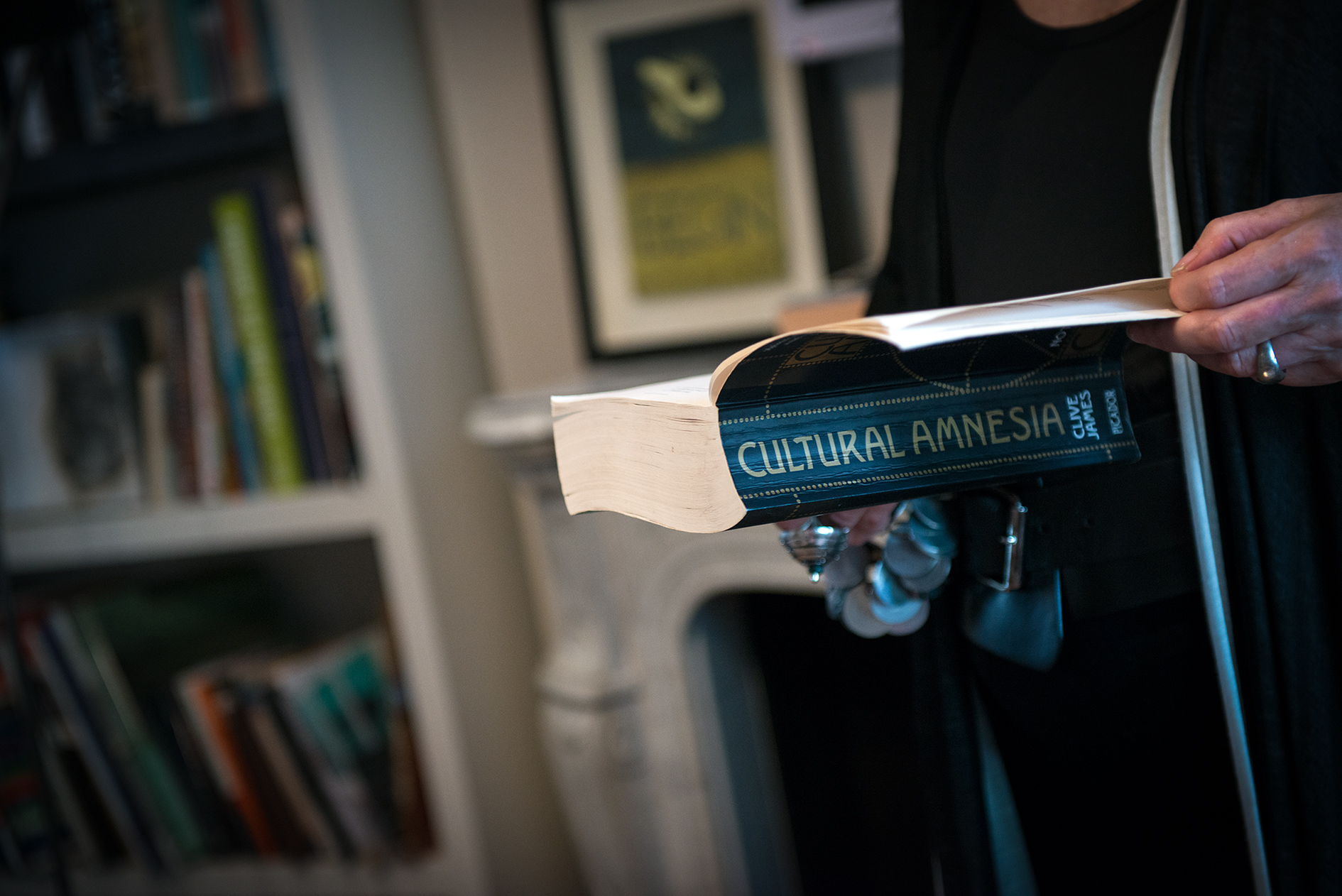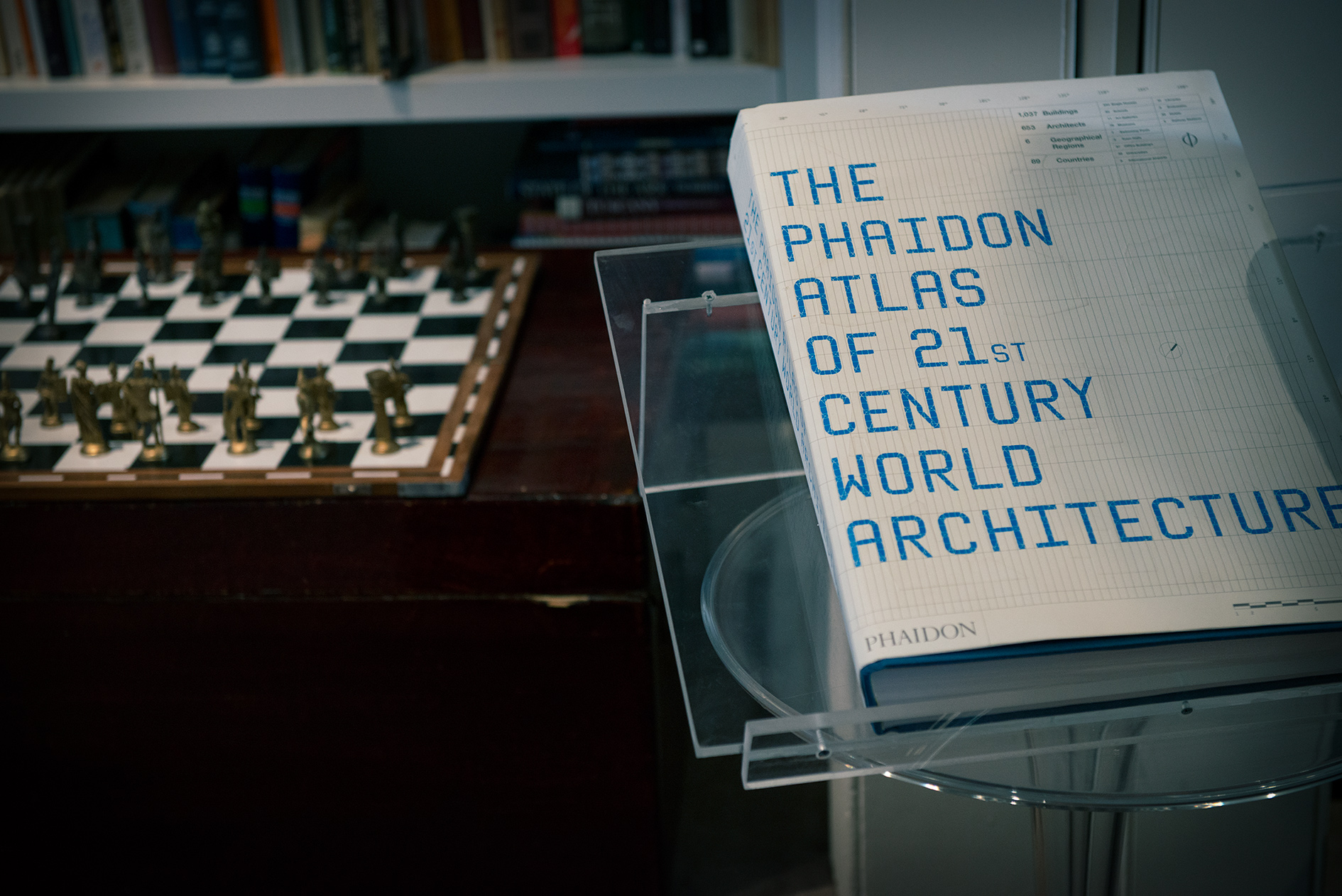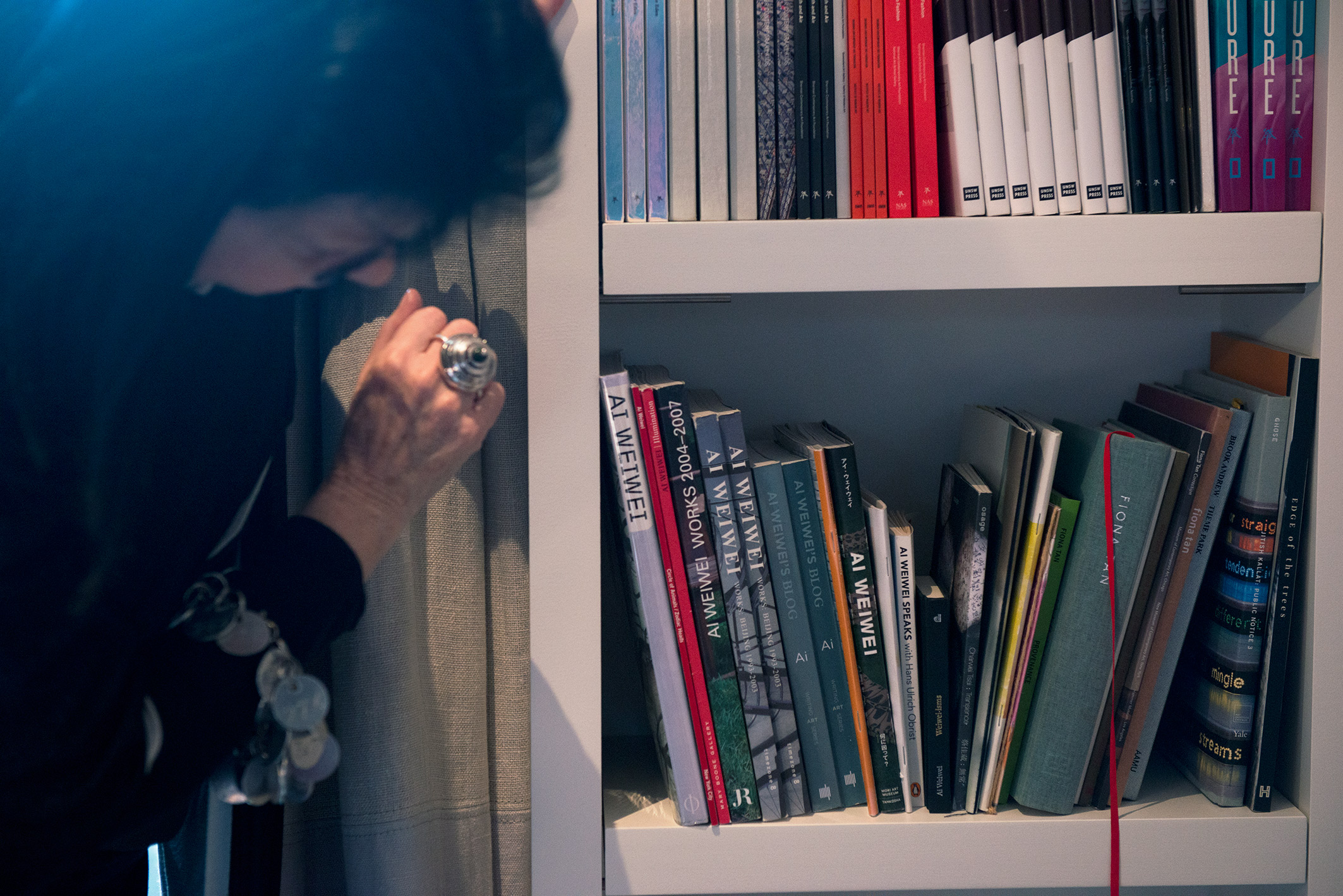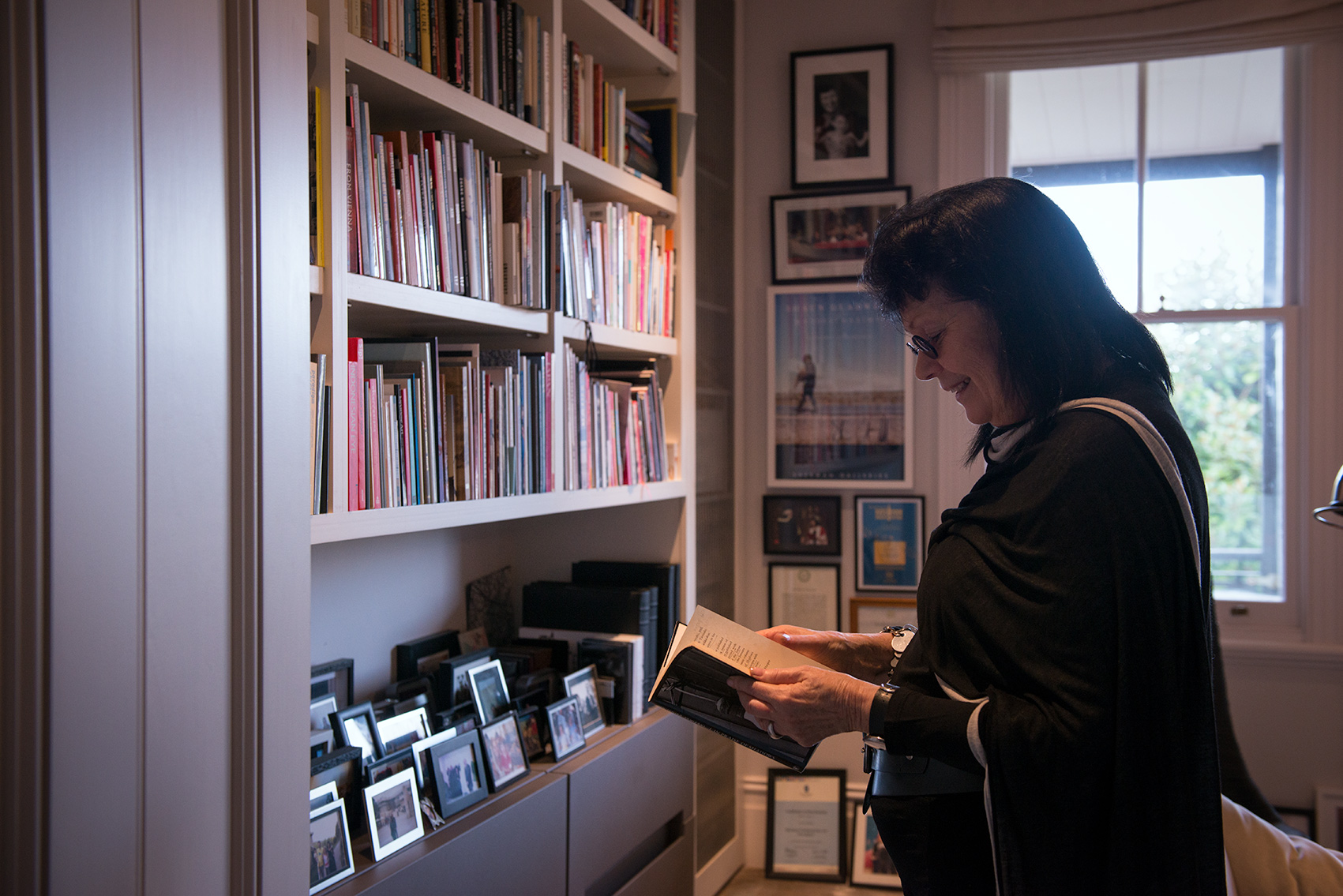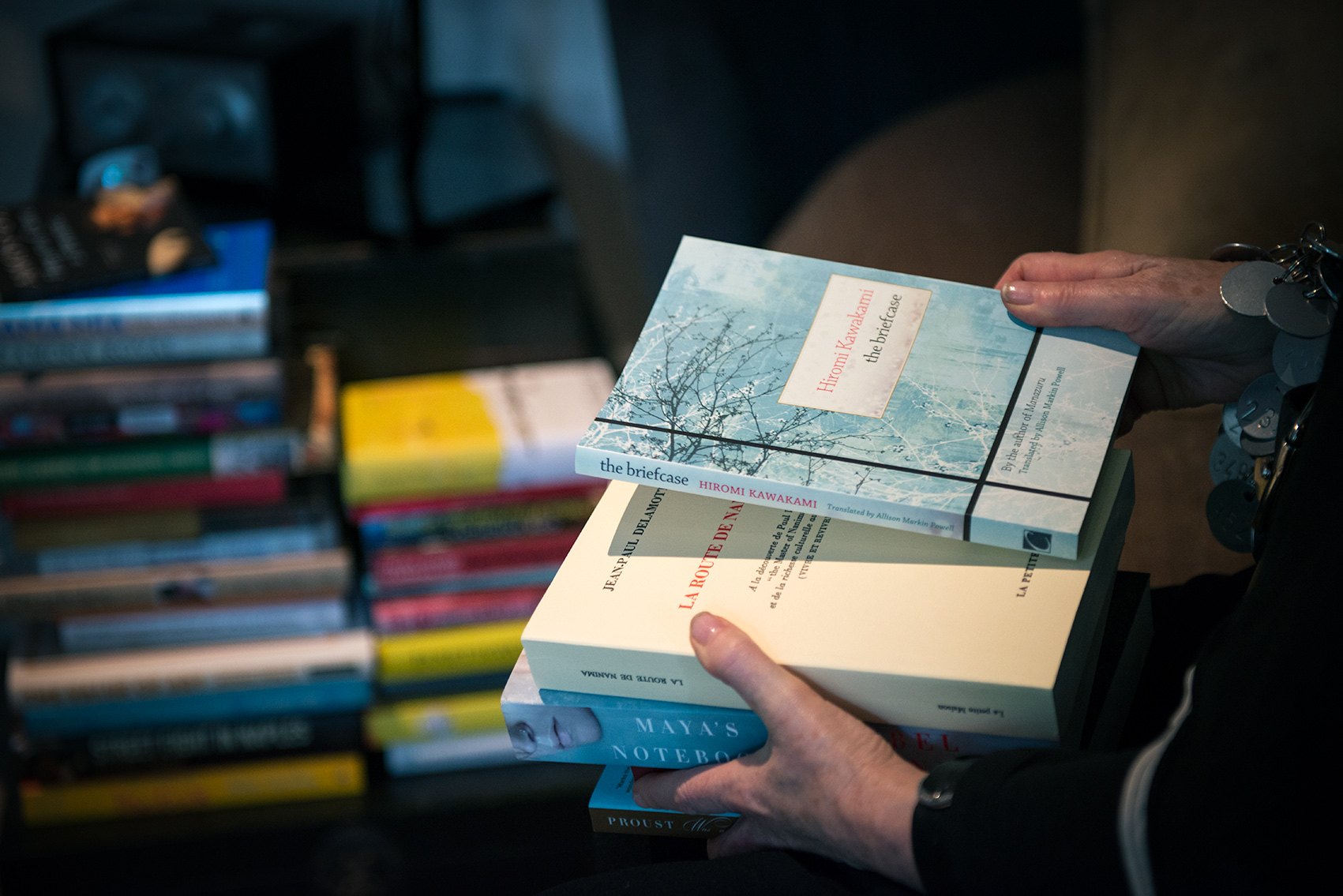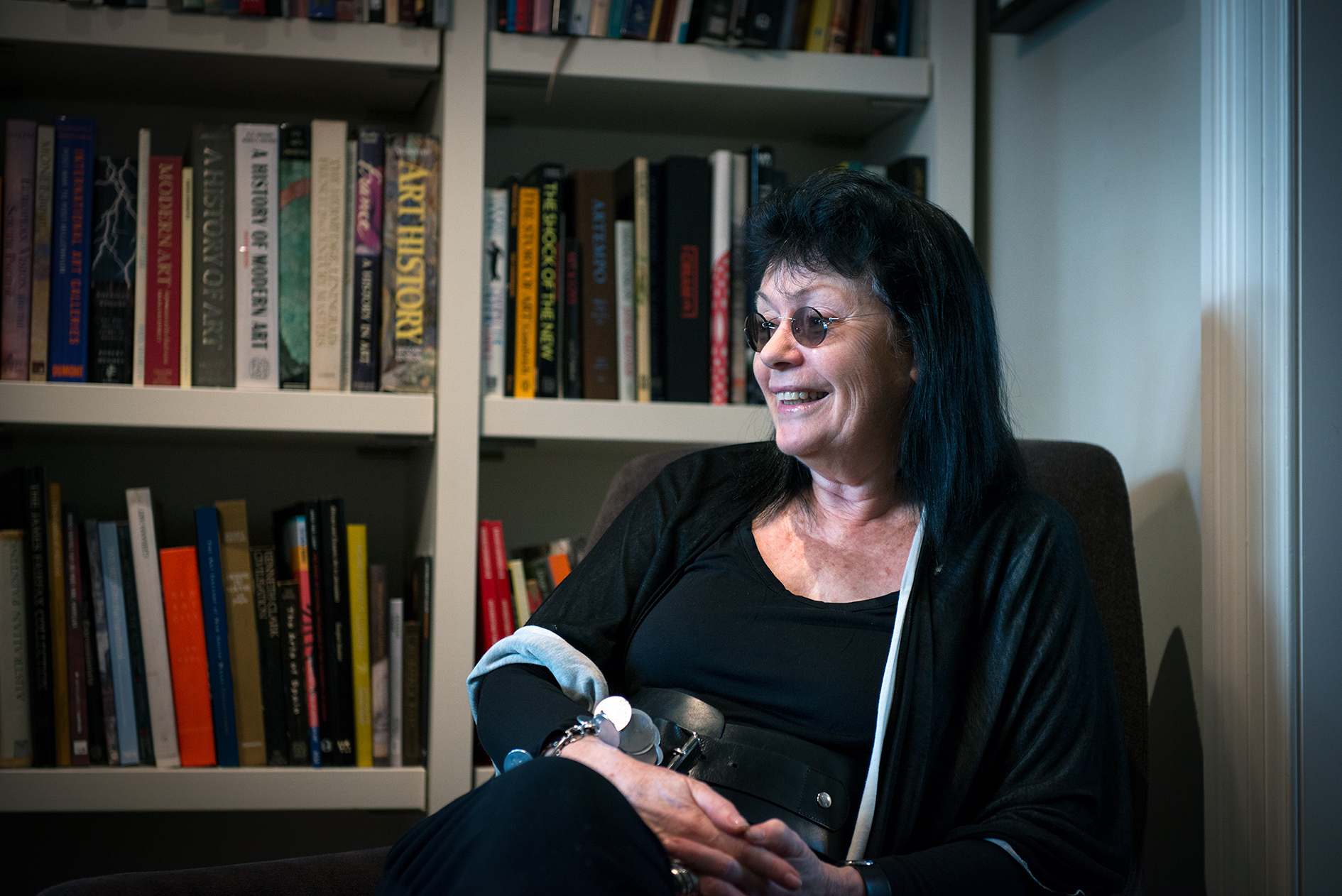Interview: Dr Gene Sherman AM
Written by Hello Bookcase, Posted in Interviews
Gene Sherman greeted us with her arms wide open and lead us through her home as she introduced us to the many bookcases that flowed through every room sharing the space with the Sherman’s extensive art collection. Gene generously shared stories with us from her childhood in South Africa, travels through Asia, studies, family and the books with which she shares her home.
Over the last ten years I have documented my reading – I don’t summarise the plot, the impulse is to critique, to document what I think of the book. I wish I had done this earlier – I have read every single day since the age of six. If I don’t read I can’t function the next day – reading is an essential part of my life and it always has been.
I have been very successful in introducing the love of reading to my granddaughter who is ten – her family have moved to Tel Aviv – and I thought if there was one gift I can give her – the gift of reading, was what I wanted to pass on. They have now settled and she is still reading. I read to my six grandchildren and our children’s library grows by the minute.
At the moment Brian’s (Gene’s husband) library is filled with books about the history of the Holocaust, books on animal protection and the works of J.M Coetzee. We have an animal protection foundation called Voiceless with John Coetzee, Michael Kirby as co-patrons. A huge conference on J.M Coetzee celebrating his 75th birthday has been organised at the University of Adelaide in November 2014. Brian will be speaking at the conference so I piled Coetzee’s entire oeuvre on Brian’s desk. He will reread several or many of them. The first Coetzee book I read was Waiting for the Barbarians – a searing, unforgettable experience.
Coetzee like our family is a vegetarian and wrote a book called Elizabeth Costello, a central protagonist and kind of an alter ego for him – and in two chapters she talks about the lives of animals – which were published separately.
I have just finished reading a book documenting the correspondence between Coetzee and Paul Auster, Here and Now: Letters, 2008 – 2011 a three-year correspondence between the two of them on a range of topics published in 2013. Two highly intelligent, well read, and respected fiction writers from very different backgrounds who have a rich and layered conversation via letters. I would dearly love to explore the bookcases of both Coetzee and Auster.
Now that I am not teaching French Literature and obliged to read prescribed texts I tend to read in clusters, I read a fictional account of the wife of F. Scott Fitzgerald, Therese Anne Fowler’s Z: A Novel about Zelda Fitzgerald. I highly recommend it. Her life is imagined but is clearly rooted in reality. It is difficult to know how much is real. The author clearly states that there has been considerable research but that she hasn’t stuck rigidly to the facts.
I admired Rachel Kushner’s – The Flame Throwers. A first novel – a young voice. It took me a while to get into it but I persevered. A beautifully told tale set in the New York art scene in the seventies. Affairs of the Art by Katrina Strickland continued my art world reading during a specific period.
I don’t often reread books, I have too much I still want to read. The times I have reread much loved books, I found myself disappointed – there is inevitably a gap in age and experience. I read Anna Karenina by Tolstoy when I was 18 or so I thought then it was the best thing I had ever read. I then reread it around 10 years ago and it didn’t have the same impact. The Glass Bead Game by Hermann Hess was a book that made a huge impression on me I haven’t read it for decades and hesitate to do so for fear of destroying my earlier sense of wonderment.
One of the books I remember leafing through with my father as a child was a very large textile – covered grey book with fraying edges. We poured over large colour plates of Impressionist and Post Impressionist work. My mother’s sister was a practising, exhibiting artist and when my father became successful in business he turned to art collecting. We had many books on art and we went regularly to exhibitions. My art interest was inspired by a world of activity rather than by a specific event of moment.
The book that stands out for me from my childhood is Little Women. I read this classic rite-of-passage book many times as a child. The story and writing have transcended time. My mother was one of four girls and my grandmother-like Marmee in Little Women – raised four girls. She lost two husbands over a fairly short period and raised the four girls earning income as a seamstress. Each of the girls in my mother’s family corresponded, in my mind, to each of the young girls in the book. My mother closely resembled Beth.
When I started the gallery I went to Japan for the first time in 1987. My deep interest in literature helped me enormously to grasp what was for me a very foreign and unfamiliar culture. Instead of learning Japanese I decided to read Japanese literature for two years and nothing else. The book that most affected me was The Makioka Sisters by Tanizaki Jun’ichirō a tale about four sisters set in the 40s in Japan. In those times Japanese daughters had to marry in order of age and the book is about the youngest daughter waiting for her older sister to marry in order to be able to move into marriage herself.
So I had Little Women, my mother’s family and The Makioka Sisters all tied together in my mind.
Tanizaki became a favourite – In Praise of Shadows 1933 made an enormous impression on me. A tiny book, very potent and seminal in exposing and comparing Japanese and Western aesthetics. The title sums up the content in many ways: Bright, shiny and overt in the West. Shadowing, subtle and covert in Japan.
I am not a collector of rare books – I buy books for content. I like books to be well designed but design is not what draws me to them. If I could only keep a few of my books Cultural Amnesia by Clive James would be included. That book helped me get through a difficult time a few years ago. It is a series of short chapters or essays on a variety of people: Hitler (Tyrants and despots are included), Machiavelli, Miles Davis, Freud, Coco Chanel and many other well-known 20th century luminaries. James, an Australian expat living in London – and now terminally ill – is one of our country’s thinkers and amongst our most compelling writers.
A beautifully illustrated edition, Freud’s Interpretation of Dreams was given to me as a gift by Jeffrey Moussaieff Masson the editor and a friend. Jeffrey is a psychoanalyst currently living in New Zealand. The Writings of Simon Schama would certainly be on my list of highly significant books. Schama is a British historian and art historian who writes about history through art. I am also fascinated by architecture so I would include The Phaidon Atlas of 21st Century World Architecture. An enormous – impractical-to-read tome due to its size and weight.
I have a largish Asian Contemporary Art and Literature library upstairs in my study. Until recently I had several shelves of French books related to my doctorate. These now have been given to Sydney University’s French Department and I now have a little more room. I also have all the books the gallery has published and books related to our publications.
My daughter (Ondine Sherman) has published her own book – The Miracle of Love 2013 about her journey with her family and specifically about her twin sons who were born with a rare condition which deprives them of speech or the ability to walk. They are identical twins with the same DNA (as is always the case with identical twins). It’s been a tough journey but she has been an amazing mother and has proved to be a remarkable writer.
I did my doctorate in French literature on André Gide and the Old Testament. Gide has fallen out of favour whilst Proust is currently still read. Gide was an important early 20th century writer who wrote solidly for 60 years. He married into a wealthy family and was free to write full time during the course of his long life.
My Ph.D. thesis was completed in Sydney but mostly done through University of Sorbonne – Paris IV in 1974-1980. I had classical Hebrew as part of my education in Johannesburg. From the age of six I learnt the Old Testament in Hebrew. The only topic I could find in Frances’s Service des Doctorats that hadn’t been tackled at the time was Gide and the Old Testament. I reread the Bible in French, in the Protestant translation that Gide would have read himself. I reread it as a series of myths and stories.
Books for me are not precious, I read them to learn and experience. Next to my bed are piles of books on my current list – My niece Mia Freedman’s book, Mamma Mia is there as well as Romona Kaval’s By the Book which was recommended to me. She tells of her life through the books she has read. Maybe one day I will write a book about my years as a reader.
About Gene
Dr Gene Sherman AM is Chairman and Executive Director of Sherman Contemporary Art Foundation. She was formerly Director and Proprietor of Sherman Galleries, representing major artists across Australia and the Asia-Pacific region (1986–2007). She is Adjunct Professor, UNSW Art & Design (formally COFA), Deputy Chair of the National Portrait Gallery Board, a member of the Australian Institute of Art History Board, an Asialink Asia Literacy Ambassador, and a member of the Art & Australia magazine Advisory Board, the Tate Asia-Pacific Acquisitions Committee and the International Association of Art Critics. The Foundation is a member of CIMAM, the International Committee of ICOM for Museums and Collections of Modern Art. Dr Sherman’s awards include the Chevalier de l’Ordre des Arts et des Lettres (2003), Doctorate of Letters honoris causa (The University of Sydney, 2008) and Member of the Order of Australia (2010).
Leigh Russell and Kathy Luu chatted with Gene on the 16th July 2013. Images by Kathy Luu © Hello Bookcase 2013. Unauthorised use and/or duplication of this material without express and written permission from this blog’s author and/or owner is strictly prohibited.
